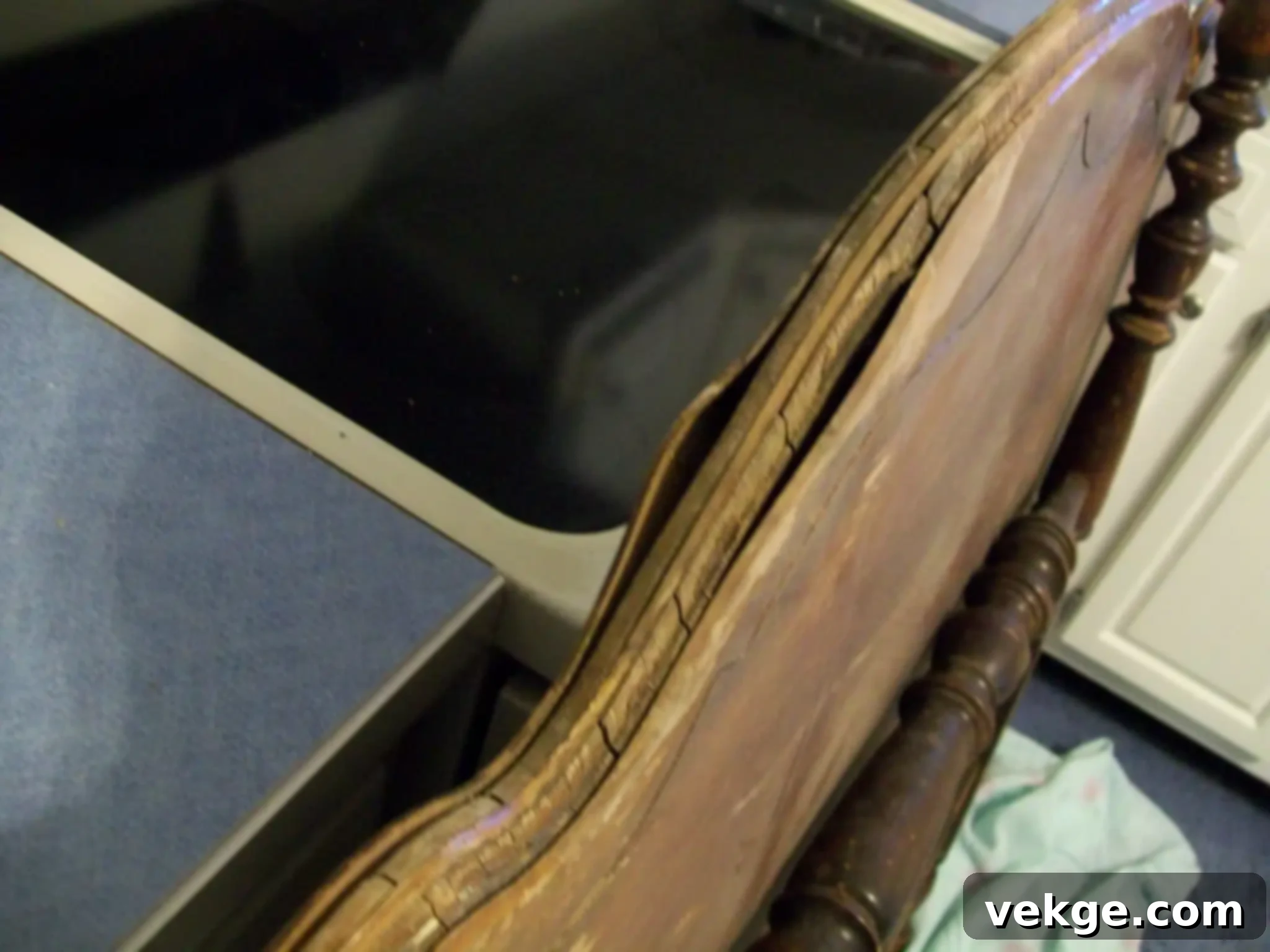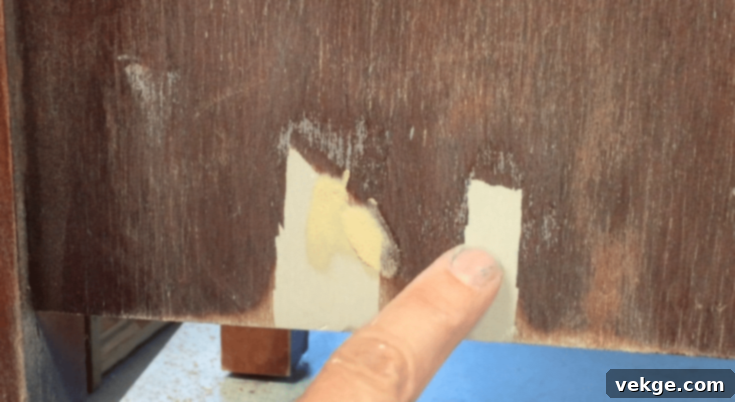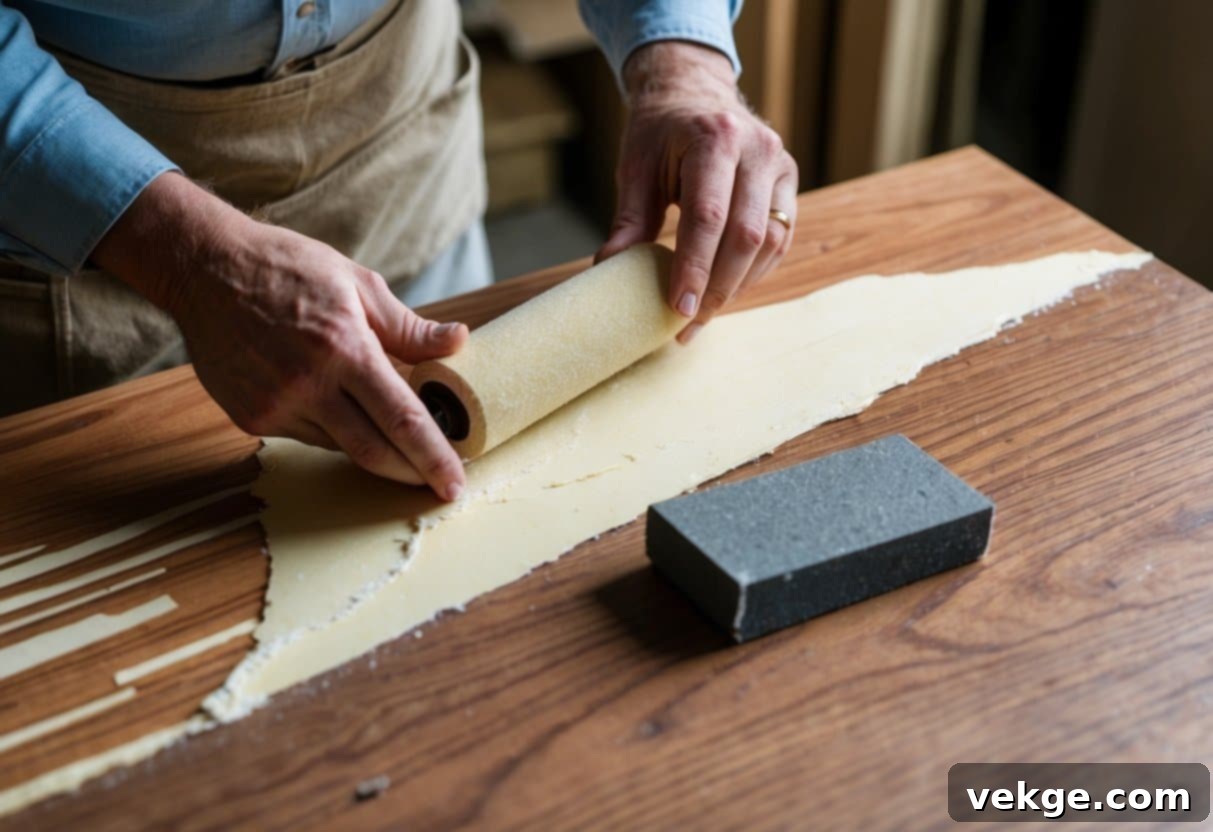Mastering Peeling Veneer Repair: A Comprehensive Guide to Flawless Furniture Restoration
Peeling veneer can be a frustrating sight, transforming cherished furniture into an eyesore. Fortunately, with the right techniques and a bit of patience, most peeling veneer issues can be repaired, restoring your furniture to its former glory. This comprehensive guide will walk you through the common pitfalls to avoid, how to accurately identify veneer problems, and the most effective repair strategies to ensure a lasting and professional finish. Whether you’re dealing with a minor lift or a more significant detachment, understanding these principles is key to successful veneer restoration.
One of the most critical mistakes to avoid when attempting to fix peeling veneer is using the wrong adhesive. Many novices grab the nearest bottle of glue, unaware that an unsuitable product can lead to further detachment, discoloration, or even irreparable damage to the veneer and the underlying substrate. Selecting the correct type of glue—matched to the veneer material and the specific environment—is absolutely essential for achieving a durable and aesthetically pleasing repair.
Another frequent error, often overlooked, is neglecting to thoroughly clean the surface before attempting any fixes. Imagine trying to stick a bandage onto a dusty wound; it simply won’t adhere properly. Similarly, dust, grease, old adhesive residues, and other contaminants will compromise the effectiveness of even the best repair strategies. Proper surface preparation ensures optimal adhesion, leading to a much stronger and more seamless result that stands the test of time.
Ignoring the importance of applying consistent and sufficient pressure (clamping) to the veneer after applying the adhesive is a common oversight that can undermine all your hard work. Without adequate pressure during the curing process, the veneer may not bond well with the substrate, leading to unsightly bubbling, a weak attachment, or complete detachment over time. Mastering proper clamping techniques is fundamental to achieving a smooth, flat, and durable finish that effectively restores your furniture.
Identifying Peeling Veneer Issues

Accurately identifying peeling veneer issues is a crucial first step in addressing the problem early and preventing more extensive damage. Early detection allows for simpler, less invasive repairs, much like addressing Seattle dry rot repair before it spreads. By learning to recognize key indicators such as subtle discoloration, changes in texture, or minor lifting, you can tackle problems before they worsen and become more challenging to fix.
Recognizing Early Signs of Veneer Damage
Early signs of veneer damage are often subtle but crucial indicators that warrant immediate attention. One of the most common early signs is bubbling. Bubbling often appears as small, raised areas or blisters on the veneer’s surface, indicating that the adhesive bond beneath has weakened, frequently due to moisture intrusion or changes in temperature. These bubbles can range from tiny bumps to larger, more noticeable swells.
Discoloration is another tell-tale sign. This can manifest as dark spots, fading, or uneven tones, often suggesting underlying wood damage, exposure to excessive moisture, harsh sunlight, or even chemical spills. For instance, dark water stains on veneer often signal persistent moisture problems. Minor lifting, where the edges or corners of the veneer begin to separate from the underlying substrate, is also a clear indicator. This separation usually starts subtly and can progress quickly if not addressed. Catching these early signs—bubbling, discoloration, and minor lifting—is vital; prompt action can prevent them from evolving into more extensive and costly repairs, preserving the integrity and beauty of your veneered surfaces.
Distinguishing Between Peeling and Cracking
While both peeling and cracking indicate veneer damage, they are distinct issues requiring different repair approaches. Understanding this distinction is fundamental for successful veneer repair.
Peeling refers to the veneer coming loose or detaching from the substrate. It typically begins at the edges, corners, or areas of high stress and progresses inward. The veneer literally “peels” away, often lifting in sheets or flakes. Peeling is most commonly caused by factors like prolonged moisture exposure (which weakens the adhesive), poor initial adhesive quality or application, lack of proper clamping during original installation, or simply the natural aging process of the glue. When veneer peels, the goal of the repair is almost always to re-adhere the existing veneer back to the substrate.
Cracking, on the other hand, involves the veneer breaking or fracturing. This results in visible lines, splits, or fissures that run along the grain or across the surface. Cracking is often caused by excessive dryness, which makes the wood brittle and prone to splitting, or by impact damage. Unlike peeling, where the veneer is merely detached, cracking involves a physical break in the veneer material itself. Repairing cracks often requires filling the gaps with a suitable wood filler, carefully sanding, and then potentially touching up the finish, rather than just re-gluing. Understanding these differences ensures that you apply the correct repair methods, leading to a more effective and long-lasting restoration for your furniture.
Effective Repair Techniques for Peeling Veneer

Fixing peeling veneer requires a systematic approach, combining careful attention to detail with the selection of the right materials and techniques. An effective repair not only mends the immediate problem but also addresses any underlying issues that may have caused the veneer to peel in the first place, ensuring durability and preventing future recurrence. This section will guide you through the critical steps and considerations for a successful veneer repair.
Step-by-Step Veneer Repair Process: A Detailed Approach
Successful veneer repair hinges on a methodical approach. Follow these steps for the best results:
1. Thorough Surface Preparation: The Foundation of a Lasting Repair
Before applying any adhesive, meticulous surface preparation is paramount. Begin by carefully removing any loose or brittle pieces of veneer that are beyond repair. Use a utility knife or a thin spatula to gently lift the edges of the peeling veneer, being cautious not to cause further damage. Once lifted, inspect the underside of the veneer and the exposed substrate for old adhesive residue, dust, grease, or any other contaminants. Old, hardened glue can be carefully scraped away with a chisel or a sharp blade, or softened with warm water and a cloth for easier removal (test this on an inconspicuous area first, as water can damage some veneers).
Next, clean both surfaces thoroughly. A clean, dry cloth can remove dust, while a degreaser or mineral spirits can tackle grease and oil (again, test first). Ensure the surface is completely dry before proceeding. Lightly sanding the exposed substrate with fine-grit sandpaper (220-grit) can help create a slightly rough surface, which improves glue adhesion. This meticulous preparation ensures that your chosen adhesive can form the strongest possible bond, preventing future delamination and ensuring the longevity of your repair.
2. Choosing the Right Adhesive for Veneer Repairs
Selecting the appropriate adhesive is one of the most crucial decisions for a long-lasting veneer repair. The best choice depends on the type of veneer, the extent of the damage, and the environmental conditions the item will face.
- PVA (Polyvinyl Acetate) Wood Glue: Commonly recommended for most general veneer repairs, especially for smaller lifts and bubbles. PVA glues (like Titebond or Elmer’s Wood Glue) offer strong bonding capabilities with wood veneers, are easy to clean up with water, and have a reasonable open time, allowing for minor adjustments. They dry clear and are durable once cured.
- Contact Cement: Best suited for larger areas of veneer that have fully detached. Contact cement forms an immediate, strong bond once the two coated surfaces touch, which means there’s no room for error or repositioning. It requires careful application to both the veneer and the substrate, allowing both surfaces to dry to a tacky stage before mating them. Be aware of its strong fumes and use in a well-ventilated area.
- Hide Glue: A traditional adhesive, particularly popular for antique furniture restoration due to its reversibility with heat and moisture. Hide glue has a longer open time, allowing for more manipulation, and dries hard but brittle. It’s less water-resistant than PVA but preferred by purists for its historical accuracy and ease of future repairs.
- Epoxy: For the most resilient repairs, especially if there’s significant structural damage or exposure to moisture, a two-part epoxy adhesive can be used. Epoxy provides an extremely strong, waterproof, and durable bond. However, it’s irreversible and can be messier to work with, typically requiring careful mixing and a longer cure time.
Always ensure the adhesive matches the material and the conditions under which the veneer will be used. If possible, test a small, inconspicuous area first to confirm compatibility and desired results.
3. Applying Adhesive and Even Pressure During Repairs
Once you’ve selected your adhesive, careful application and proper pressure are key. For small bubbles or lifted edges, a hypodermic needle or a fine-tipped applicator can be used to inject wood glue underneath the veneer. For larger detached areas, spread a thin, even layer of your chosen adhesive on both the substrate and the back of the veneer (if using contact cement) or just the substrate (for PVA or hide glue). Use a small roller, brush, or spreader to ensure complete coverage without excessive pooling.
Proper pressure application is essential to ensure the adhesive bonds well with both the veneer and the substrate. After applying the adhesive and positioning the veneer, immediately apply consistent and even pressure across the entire repaired area. Use clamps, heavy objects, or specialized veneer presses. For smaller areas, a block of wood wrapped in wax paper and clamped down can work effectively. For larger surfaces, a flat board (a “caul”) placed over the veneer, protected by wax paper or plastic sheeting to prevent sticking, and then clamped at regular intervals, will distribute pressure evenly. Books, weights, or sandbags can also be effective.
Be extremely mindful to distribute the pressure uniformly to avoid warping, bubbling, or creating uneven bonds. Use a soft cloth, felt pad, or a piece of wax paper between the veneer and the clamping surface to prevent damage or indentations. Allow the adhesive to cure completely as per the manufacturer’s recommendations—this can range from a few hours to 24-48 hours—before carefully removing the pressure. Premature removal can compromise the bond and undo your hard work.
4. Addressing Underlying Causes of Veneer Damage
To prevent future issues and ensure the longevity of your repair, it is crucial to identify and address the root cause of the veneer peeling. Failing to do so can lead to repeated damage in the same area or elsewhere on the furniture.
- Moisture Exposure: This is a common culprit. Ensure that the area is completely dry before beginning repairs. After the repair, implement preventative measures such as using coasters, avoiding placing items near humidifiers or direct water sources, and maintaining consistent indoor humidity levels. For outdoor or bathroom furniture, consider applying a water-resistant sealant if appropriate for the veneer type.
- Heat Fluctuations: Extreme temperature changes can cause wood to expand and contract, stressing the veneer bond. Ensure that the furniture or veneered surface is not subjected to direct sunlight for prolonged periods, or placed too close to heat sources like radiators, fireplaces, or heating vents. If relocation isn’t possible, consider using reflective blinds or heat shields.
- Impact and Stress: Areas regularly exposed to stress or impact are more prone to damage. If the veneer peeled due to a bump or frequent use, consider reinforcing the area (if feasible) or simply being more mindful of how the furniture is used. For instance, the edge of a frequently used desk might benefit from a protective trim.
- Aging Adhesive/Poor Initial Application: Sometimes, the original adhesive simply fails due to age or was poorly applied initially. In these cases, thorough cleaning and re-adhesion with a high-quality modern adhesive are the best preventative measures for that specific area.
By thoroughly tackling these underlying factors, you can significantly minimize the risk of future peeling and ensure that your veneer repair is not just a temporary fix, but a durable and lasting restoration, preserving the beauty and value of your furniture for years to come.
